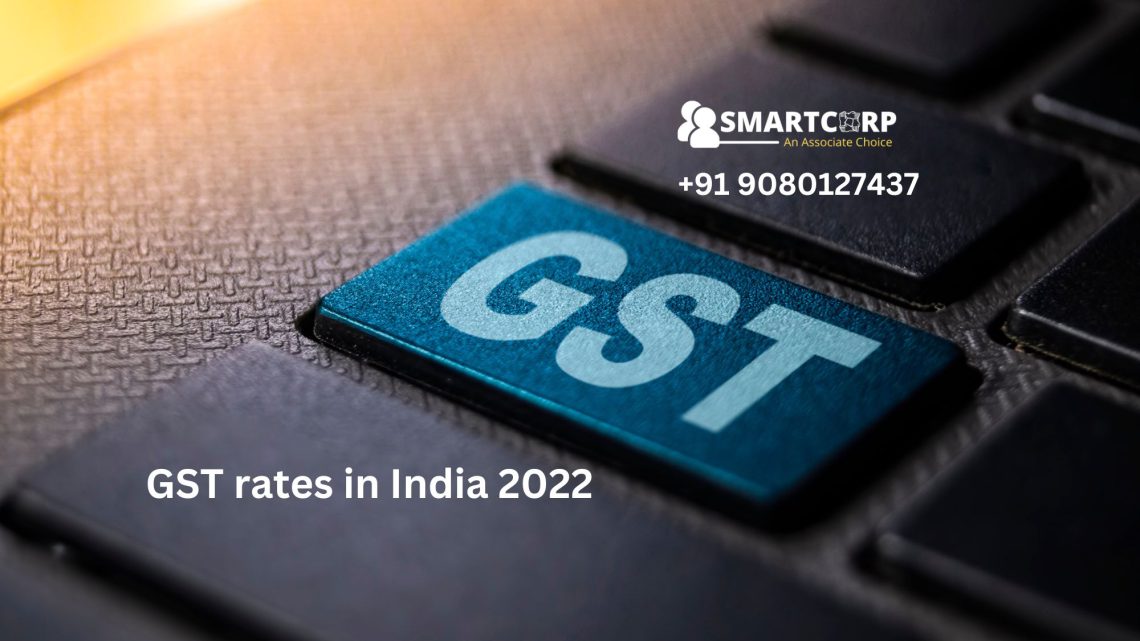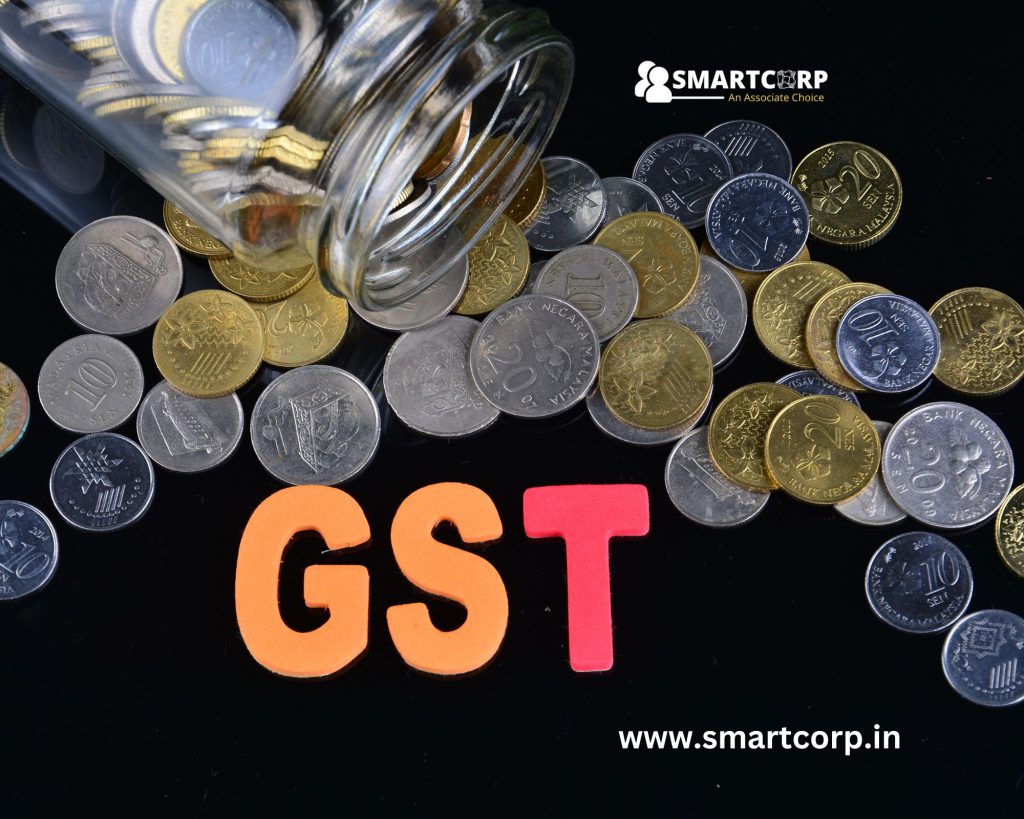
GST rates in India 2022
The GST rate slabs are chosen by the GST Council. GST Council reconsiders the rate slab of goods and services occasionally. Then GST rates are normally high for luxury supplies and low for fundamental requirements. GST rates in India for different goods and services is separated into four slabs: they are 5% GST, 12%, 18% , and 28%.
The GST rates for different items have been changed a few times by the GST Council starting from the commencement of the Goods and Services Tax (GST). The most recent rate revision was brought into impact in the 41st GST Council Meeting which was held on Aug 27, 2020. Before that, there have been numerous GST Council Meetings in which certain rate revisions were introduced.
The Union Budget 2022 was reported by the Finance Minister Nirmala Sitharaman on 1 February 2022. According to the most recent budget, no proposal has been made to change the GST rates in the country.
Revision of GST Rates declared in the 43rd GST Council Meeting
- GST on the export of relief goods to have absolved and will remain essentially until 31 August 2021.
- GST on import of medicines for black fungus that is Amphotericin B is additionally positioned under the exclusion list.
- Any Coronavirus related alleviation thing whenever imported even fully intent on giving to the public authority or any help union will have exclusion from IGST till 31 August 2021.
- Amnesty Scheme was reported by the finance minister to lessen late fee returns. New and small taxpayers can file returns under this scheme.
- A Council of ministers will have framed who will present a report by 8 June 2021 to decide if the rates are to have expanded or diminished.
Revision of GST Rates reported in the 42nd GST Council Meeting
Features of the Council held on 5 October 2020
- Small taxpayers with turnover of under Rs.5 crore can now file quarterly GSTR-3B and GSTR-1 where the due date for GSTR-1 will be the 13th day of the month succeeding the quarter. This new rule became effective on 1 January 2021. Because of the execution of this standard, the quantity of profits has diminished to 8 from 24.
- The quarterly taxpayers have the choice of paying 35% of the net tax obligation of the past quarter, utilizing an auto-produced challan for the initial two months of the quarter.
- For the auto-age of GSTR-3B, a guide is ready, where the subtleties of the provider’s GSTR-1 will help in auto-populating the ITC. GSTR-1 will help in auto-populating the duty risk too. Thus, it is critical to file GSTR-1 preceding filing GSTR-3B compulsorily. This standard happened on 1 April 2021.
- Taxpayers will pay their GST through a basic challan.
- Taxpayers with a turnover of Rs.5 crore or more should specify a 6-digit HSN code. A 4-digit HSN code is to have referenced by taxpayers with a turnover of under Rs.5 crore. This standard came into effect on 1 April 2021.
- Bank accounts which have their PAN connected with Aadhaar will actually want to get discounts.
- ISRO, Antrix Enterprise, and New Space India Limited (NSIL) will get GST exceptions to energize the space launching services in India.
- Sanitisers that had non-alcoholic will be kept on being charged at 18% GST.
- The pay cess gathered till date adds up to Rs.20, 000 crore. This sum had dispensed to explicit states in India by 5 October 2020.
- Rs.25, 000 crore towards IGST 2017-18 had circulated to explicit Indian states.

Features of the Council held on 12 October 2020
- The Council finished with no unanimity on the issue of borrowing. The states might profit of the choices recently gave to get reserves.
- The compensation cess will have demand will past the 5-year residency.
- The center can’t get in the event of deficiency of pay cess store as it will make an expansion in the yield of G-sec bonds.
- A borrowing calendar has given where in the event that the acquiring goes past as far as possible, the G-Sec arrangements utilized as a benchmark for each and every other borrowing will increment.
- Cess gathered from July 2022 won’t have the dispense to states in India and will be utilized for the installment of head and interest. This will help in excluding the state from the weight of reimbursing the acquired sum.
Revision of GST Rates reported in the 41st GST Council Meeting
The 41st GST Council meeting had the lead by the Union Finance Minister Nirmala Sitharaman and was held on 27 August 2020. The government will give an extra 0.5% unwinding in states where as far as possible is under the FRBM Act. States can get more because of the injury that has brought about by the Covid flare-up. Two choices have given to the states to meet the pay cess shortage.
Revision of GST Rates reported in the 40th GST Council Meeting
The 40th GST Council meeting was led by the Union Finance Minister Nirmala Sitharaman and was held on 12 June 2020. According to the Council, no late tax will be collected for taxpayers that go under nothing charge risk. In the event that taxpayers document the profits between 1 July 2020 and 30 September 2020, the greatest late tax that can be charged is Rs.500.
On account of small taxpayers (total turnover of up to Rs.5 crore), the pace of revenue has diminished to 9% from 18% p.a. for GST returns that have petitioned for February, and April 2020. In any case, the profits should be filed before 30 September 2020.
Commodities and Services GST rates
The GST Council has proposed a four-level tax structure wherein rates are either nothing or exceptionally low most definitely. The justification for this is that these food things comprise around 50% of the customer bushel, and contributes fundamentally towards guaranteeing that boundless expansion is held within proper limits even after the amended tax slabs under GST have carried out.
Negative things and luxury goods, be that as it may, are supposed to be charged at a significantly higher rate to keep up with income lack of bias for state and central legislatures following the execution of the new GST rates. Other valuable metals are probably going to see the execution of an extra concessional GST rate slab as these metals are presently charged at only 1% under VAT.
About Us
We Smartcorp are serving our clients with a strong professional team.
